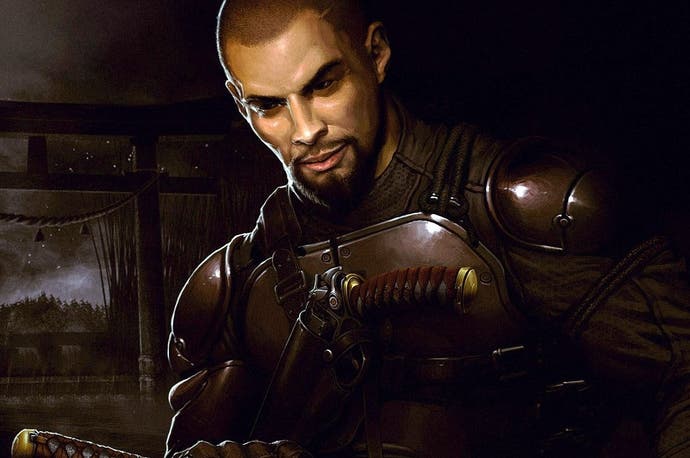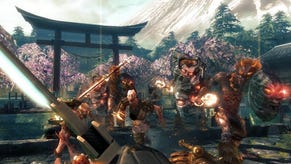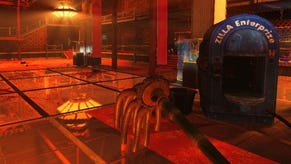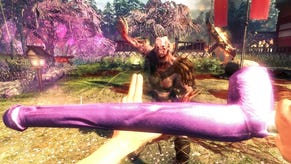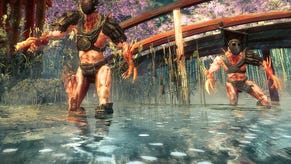Face-Off: Shadow Warrior
Samurai showdown.
Shadow Warrior made a splash last year on PC with impressive visuals and kinetic action, but high system requirements left us wondering how well it would translate to console. With developer Flying Wild Hog announcing a target of 60 frames per second on both PlayStation 4 and Xbox One earlier this year, it was clear this was an ambitious project. Of course, hitting 60fps and delivering a consistent experience are two different things. Can PS4 and Xbox One attain and sustain the target?
Shadow Warrior is built on a unique, in-house graphics technology known as the Road Hog Engine, first used in Hard Reset on PC. For Shadow Warrior, the team introduced a host of improvements, including completely dynamic lighting, parallax occlusion mapping (POM), and screen-space ambient occlusion (SSAO). All of these elements have been successfully translated onto console with minimal loss in quality. In its original PC form, one of the game's limitations was its inability to scale well across CPU cores, translating into performance issues with specific settings. So how well do the console versions fares against the PC original?
The PS4 and Xbox One versions of Shadow Warrior operate at 1080p and 900p respectively. Image quality is crisp on PS4 and although a bit blurrier, it's still relatively clean on Xbox One. Post-process anti-aliasing along the lines of FXAA does a decent job of smoothing out edges without overly blurring the image. Considering the target frame-rate, image quality is acceptable in both cases, though clearly PS4 has the advantage. However, last year's PC version still has the real edge in this regard with support for arbitrary resolutions and additional hardware MSAA. The game demands some hardware muscle to operate smoothly though, making higher resolutions difficult to reach with a consistent performance level on many PCs.
One of the most demanding visual features present in the PC version is its reflection technology, which many users were forced to disable in order to reach a stable 60fps. While many games these days utilise screen-space reflections, which are limited to reflecting only objects immediately visible on-screen, Flying Wild Hog instead opted for planar reflections that prove quite demanding for both the GPU and CPU. Surprisingly, the team has managed to implement these on consoles, but there are some sacrifices made on the way.
Alternative comparisons:
Most noticeably, the console versions do not accurately reflect all aspects of the scenery - light sources, active 2D elements (such as arcade monitors) and other elements are not reflected on the PS4 or Xbox One. In addition, there appears to be a clipping distance in play where less important objects only become reflected within a certain range. It's implemented in a very subtle fashion, however, with little obvious object pop-in visible during normal play. Reflections are also altered by whether or not they fall into an area of shadow, while the PC version produces more accurate reflections in all circumstances. Despite this difference, the effect still looks excellent and far exceeds the ugly cubemap alternative used on PC when mirrors are disabled. In fact, the console implementation suggests that an option to use lower-quality reflections on PC would have worked nicely considering their massive impact on performance.
The PC version offers quite a host of customisable options in addition to four presets - low, medium, high and ultra. The console versions appear to share equivalent settings for many rendering features, while there is not a direct match with any of the PC presets for others. Shadows are an interesting example - the quality and resolution is a match for the PC's high setting (the highest available option in this case) but they utilise a more aggressive LOD that reduces quality at a closer distance. The medium and low options on PC are a fair bit lower quality than the shadows used on console, however.
Another important visual element is the use of foliage and debris. In this case it appears that the console versions utilise the PC's high option as opposed to the higher-density ultra setting. The result here is noticeable pop-in of grass and debris while moving through the stage. It proves distracting in some instances but generally looks acceptable, although we did note a few instances in which foliage was culled more aggressively than the PC's high setting. The ultra setting on PC draws out foliage much further, creating a more consistent scene with limited impact on performance in our case.
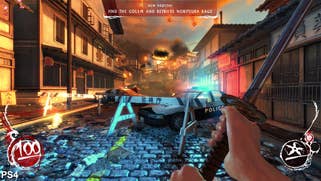
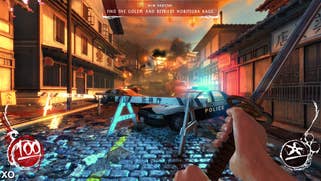


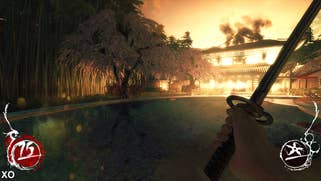
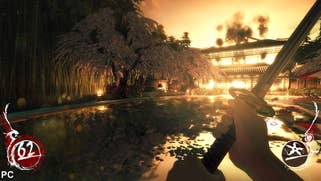
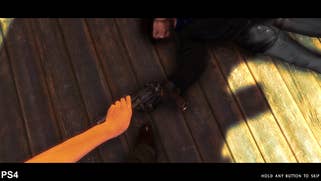
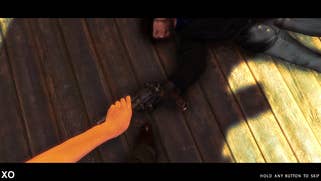
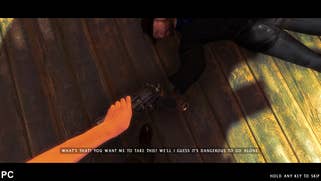

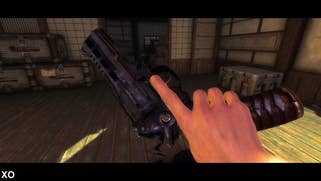
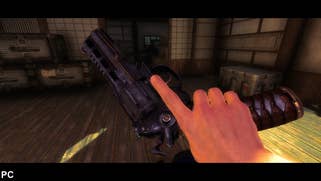
Other differences abound. SSAO, for instance, is handled completely differently between the console and PC versions. The PC version features additional coverage with more realistic shading throughout the scene. The effect is present on consoles, but doesn't appear to match up with any of the four selectable choices on PC, suggesting a revised effect specifically for this updated version. The implementation on PC looks a bit more realistic in many cases, but it still manages to look good across all three releases while appearing completely identical between Xbox One and PS4.
Post-processing, on the other hand, appears to utilise the equivalent to the PC's high setting. We did spot one instance where an additional layer of depth of field was used on PC, but this appeared to be a fluke as reloading the level eliminated it entirely. This setting seems to be primarily used to add a subtle blur to distant objects and to create contrast between the foreground and background while aiming down sights.
One other curiosity is the lighting and exposure. As with everything else, these appear identical on Xbox One and PS4, but there are differences with the PC version that cannot be explained by simply changing a setting. In some scenes, the lighting sees contrast and exposure ramped up on the consoles while in other scenes, we found the reverse situation with PC sporting the more contrast-heavy image. There doesn't appear to be any difference in shadow propagation or light sourcing in these instances, however, leaving us to wonder where the difference stems from.
Then we come to texture quality. At first glance, you may get the impression that the consoles are a match for the PC's pared-back high preset, rather than the full-fat ultra. However, close examination reveals assets that appear to be a match for the PC's ultra setting, with just texture filtering letting the side down on console, blurring detail. That said, texture filtering is superior on PS4 compared to its Xbox One equivalent. It's not on par with the PC version at its best, but it's still very acceptable and helps produce sharp, clean surfaces. On Xbox One, the lower resolution combined with lower-quality texture filtering definitely gives the impression of a blurrier game overall. At least parallax occlusion maps have made the transition to both consoles unscathed, looking absolutely beautiful when deployed.
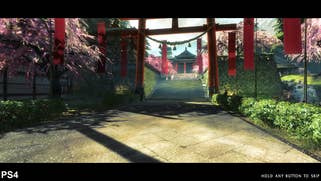

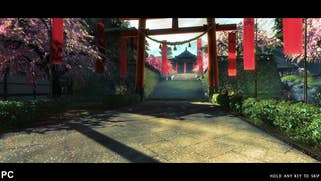
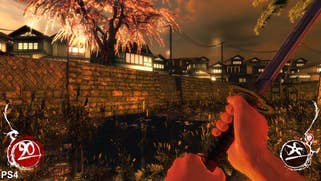





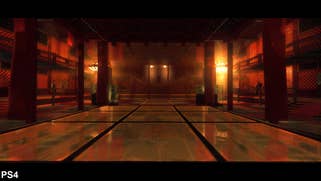
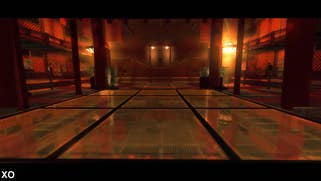
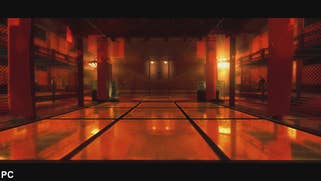
As one would expect from such a fast-paced action game, Shadow Warrior is designed to operate at 60 frames per second, with a soft v-sync solution allowing for torn frames when the engine exceeds its render budget. First impressions are excellent to the point where, after spending so much time with The Evil Within recently, popping in Shadow Warrior for the first time nearly gave us a case of whiplash. The game normally flies along smoothly, but it's not perfect. The further we played the more often we ran into challenging scenarios with dips under the target frame-rate.
Performance drops are tied primarily to alpha effects being thrown around in close proximity to the camera. The game throws a lot of enemies at you, meaning you spend a lot of time slicing through them at close range. This, paired with the crazy explosions and reflections, produce moments where the frame-rate dips into the 40s (or, in select cases, even lower). What's important to note, however, is that these issues are not sustained for long and the game manages to return to a full 60fps update pretty quickly most of the time. Also, most of the torn frames crop up while slicing through enemies, which as a result of the chaotic amount of particles flying around actually manage to stay hidden within the action. Tearing tends to prove most distracting when rotating the camera and, thankfully, it doesn't often appear while doing so.
There are definitely some instances where we felt the performance reached unacceptable levels, however. In particular, there's a battle halfway through chapter two that results in a sustained frame-rate under 50fps while another in the fourth chapter produces similar results. It would have been nice to have the option to use a triple-buffered v-sync in order to eliminate torn frames but, as it stands, the game manages to feel nice and responsive most of the time. However, those sensitive to screen-tear may find this aspect of performance to be somewhat distracting.
What's fascinating about the performance metrics for this game is that it seems to choke in the same places on both systems. Looking at an analysis of more than 20,000 individual frames we found that both versions averaged slightly above 59fps with around six to seven per cent of those frames torn. This includes scenarios that brought the frame-rate below 50fps for sustained periods of time.
The performance profile does feel rather different than the PC version, however. As it stands, Shadow Warrior is a tremendously demanding PC game, with our GTX 780 failing to deliver a solid 60fps on ultra settings. We did find that simply disabling mirrors provided enough of a boost to hit our target far more regularly but there were still odd frame-pacing issues cropping up at certain points. It definitely doesn't feel fully optimised - and this is after a number of patches. We also encountered situations where frame-times became unsteady despite a reported 60fps, resulting in additional judder that couldn't be ironed out, even with the RivaTuner Statistics Server frame-rate limiter.
There is hope for PC players, however. The overhaul made to the engine to support the consoles should bear fruit on the PC as well in the form of an updated 64-bit, DX11-compatible version of the game. This patch is not live at the time of writing, but we're hoping that these new optimisations will significantly improve the PC experience. Considering how solid the console versions are at this point, we're optimistic this will be the case.
Additionally, Flying Wild Hog deserves credit for implementing a number of options we rarely see on console. It has included full field-of-view adjustment, the ability to disable and customise the HUD, the option to disable motion blur, control over weapon inertia and bobbing, and more. For the plasma faithful, providing the option to disable or alter HUD elements is a great feature, while customising FOV is almost unheard of these days. What's more, due to the nature of the game's performance issues, the wider FOV really has little to no impact on frame-rate, so feel free to modify it to suit your needs. We absolutely love it when developers allow for this sort of customisation on consoles and feel they deserve a lot of credit for taking the time to implement these features.
Shadow Warrior: the Digital Foundry verdict
With Shadow Warrior we have been given the chance to look at a PC title converted across to the consoles, as opposed to the usual scenario where PS4 and Xbox One take point. The results are impressive and show that a lot of love and care was put into this conversion. The screen-tear problems are the one issue that we would love to see corrected with an additional option to enable triple-buffering, but even as is, the overall result is impressive. This release also highlights how console development can have an impact on PC gaming. While the jury is out on whether the upcoming 64-bit DX11 executable can dramatically improve performance, the simple idea that console optimisations could lead to a superior PC product is exciting.
Both console ports turned out pretty well, but the frame-rate doesn't quite hold up as firmly as we'd like. It's still an acceptably fast performer but the slowdown encountered in certain battle situations definitely detracts from the game's polish. Performance between the two console versions is surprisingly like-for-like, leaving general image quality as the only real differentiator between the two. As such we have to give the nod to the PS4 version for producing a sharper overall image with its higher resolution and superior texture filtering. Still, the Xbox One version is solid in its own right and shouldn't be skipped if no other options are available. If you have a powerful PC, however, we'd have to recommend this version, especially with the promise of its upcoming DX11 patch that will - hopefully - resolve many of the outstanding performance issues.
